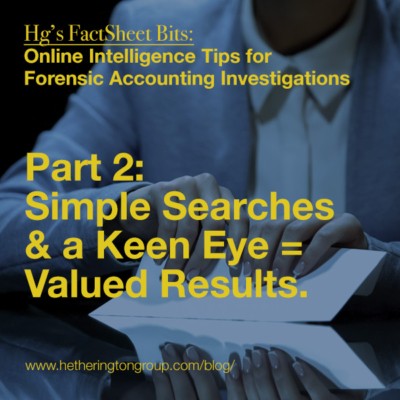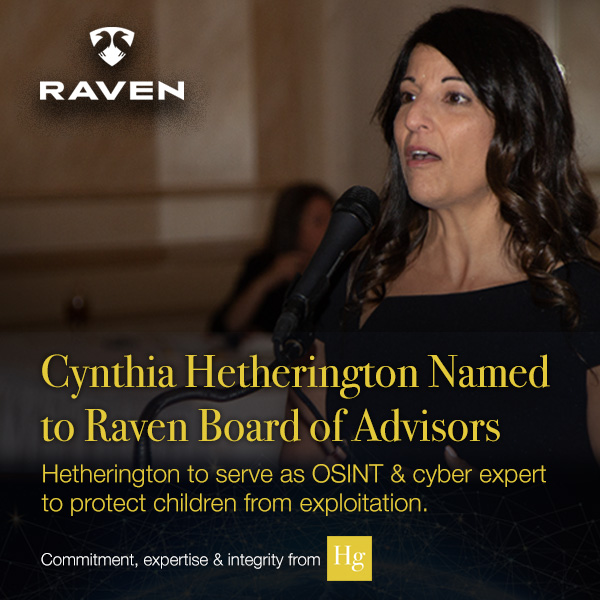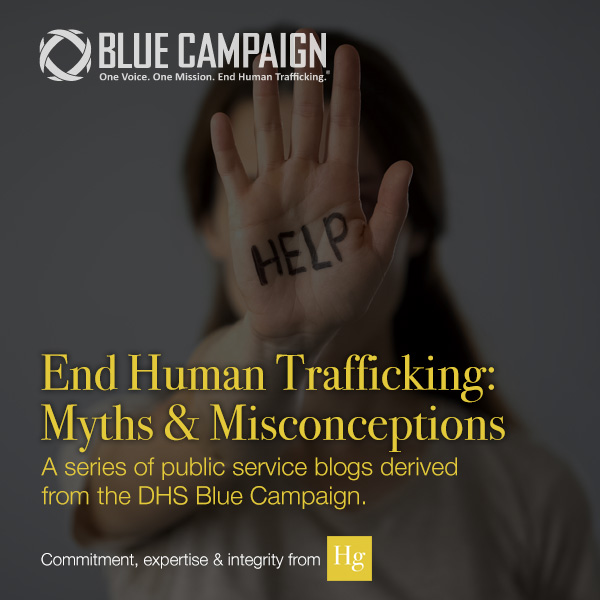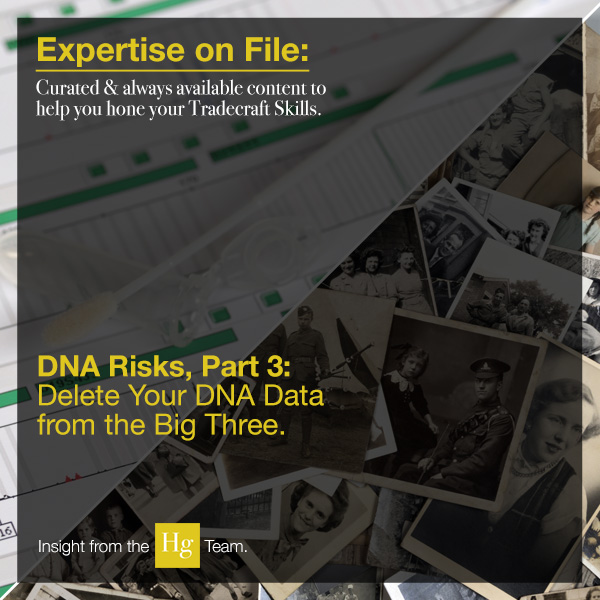 By Cynthia Hetherington
By Cynthia Hetherington
This past year I had the privilege to address The Canadian Institute of Chartered Business Valuators on the topic of online and cyber investigation applications. CBV is intensely interested in work efficiency, excellent content, and the resources that can support those endeavors. Our session was a great success and was included in the CBV Journal of Business Valuation 2020 Edition. The following is an excerpt of the session and article, in hopes of providing beneficial knowledge to information professionals, accountants, researchers and those cyber-curious truth seekers who, like CBV, value efficiency in their productivity.
Today in Forensic Accounting
In today’s data-intense, digital world we’ve all gone cyber in our endless quest for answers. Everything in the forensic accounting world, business valuations, and accounting involves data collection and fact checking. We are all invested in analyzing large datasets, finding anomalies, and extracting key information and insights.
Despite the variety of cybertools at our disposal—from optical characterization and recognition software to AI technology—an entirely different set of digital tools is proving especially useful to forensic accountants in tracking down and tracing the actions of people. The easiest to access and most readily available are open source, social media sites, search engines, and databases—some free, some not. That said, fee-based tools can hasten the investigative process, making it even more intelligent.
Following the resource tips described in this blog series will allow you to gather critical intelligence on people, historical topics, or events through public and not-so-public records without resorting to subterfuge or subverting security protocols. Understanding how these searches work—the data infrastructure or physical architecture of how information is disseminated, collected, captured, and stored—is crucial if obliged to explain your methodology to a client or testify as an expert witness in court. If uncertain about the authenticity of the information you’ve gleaned from open sources such as Facebook or Twitter, it is important that you state that clearly in a report, particularly if it serves as the basis for your analysis.
Conducting simple name searches
While a well-equipped investigator is able to access and utilize cybertools to search for persons of interest via their usernames, nicknames, aliases, photos and images, a simple name search on a social network can be quite revealing. If you lack the tools, budget, or regular client demand for searches, you can visit each site independently and filter posts, photos, videos, tags, mentions, etc.
- Search by name, nickname, aliases, and usernames.
- Augustus, Auggie, Gus, Gusjr1982.
- Consider the use of different derivatives of their name across several platforms.
- LinkedIn may be formal while Facebook might be casual.
- Add keywords or search for relatives with a less common name who may be connected to your subject.
- Search for tags and mentions regardless if the subject does not have social media, has private social media, has public social media, or had social media profiles deleted or suspended.
- Search for all versions of name and filter by posts, photos, videos, etc. Alternatively, try searching @username in search bar engines such as Google and Bing.
Searching for Usernames/Nicknames/Handles/Aliases
Leapfrogging borders, Google’s algorithm ranks information based on popularity. By entering your subject’s name within “quotation marks,” his or her most popular social media accounts will immediately pop up, along with related photos and images. Say you’re searching for an Augustus Hetherington.” Put his name in quotes, then click on all the Augustus’s to find your closest matches by location. Next, open each of his social media profiles.
His Instagram account, though rarely visited judging by the lack of activity, actually turns up solid gold: The username GreekGodGus__82. This is a key piece of information. Now you’re prepared to visit all his possible accounts using that nickname in the search bar in the format as follows: platform.com/GreekGodGus_82.
Just keep changing the source platform in the search line to see what else turns up. Gus’s Twitter account, for example, allows you to see his tweets, retweets, media preferences, interlocutors, and so on. Better still, by inserting an @ site:/username, you can search for Gus on every site ending in dot.com.
Be aware of multiple accounts
What if your subject has several social media accounts and uses different photos, avatars, and nicknames on each platform? How does that impact your search? Often, people who create separate accounts or even multiple Facebook accounts will share or “friend” their own accounts. Read through their contacts and connections with a keen eye on matches with related accounts.
Tip: Nobody is a more intrepid investigator than someone who suspects he or she has been lied to, conned, or thwarted. You may find that the quickest route to your subject is to find a jealous lover or corporate competitor who, having linked to each of her/his accounts, will have ferreted out your subject’s various usernames—in essence, completing the search for you.

OSINT TRAINING
Are you an analyst or investigator looking for advanced OSINT training on risk assessment and risk monitoring? If so, check out Hg’s webinar series, where you can attend live sessions and receive CEUs or watch previously recorded sessions to beef up your investigative skills.
 RISK ASSESSMENT
RISK ASSESSMENT
Are you concerned about your company’s or employees’ points of vulnerability through online and open sources? Our skilled analysts are experts at removing personal information that puts you, your business partners, and your family at risk. Learn how our team can assist you in assessing and monitoring your risks.
 Cynthia Hetherington, MLS, MSM, CFE, CII is the founder and president of Hetherington Group, a consulting, publishing, and training firm that leads in due diligence, corporate intelligence, and cyber investigations by keeping pace with the latest security threats and assessments. She has authored three books on how to conduct investigations, is the publisher of the newsletter, Data2know: Internet and Online Intelligence, and annually trains thousands of investigators, security professionals, attorneys, accountants, auditors, military intelligence professionals, and federal, state, and local agencies on best practices in the public and private sectors.
Cynthia Hetherington, MLS, MSM, CFE, CII is the founder and president of Hetherington Group, a consulting, publishing, and training firm that leads in due diligence, corporate intelligence, and cyber investigations by keeping pace with the latest security threats and assessments. She has authored three books on how to conduct investigations, is the publisher of the newsletter, Data2know: Internet and Online Intelligence, and annually trains thousands of investigators, security professionals, attorneys, accountants, auditors, military intelligence professionals, and federal, state, and local agencies on best practices in the public and private sectors.



